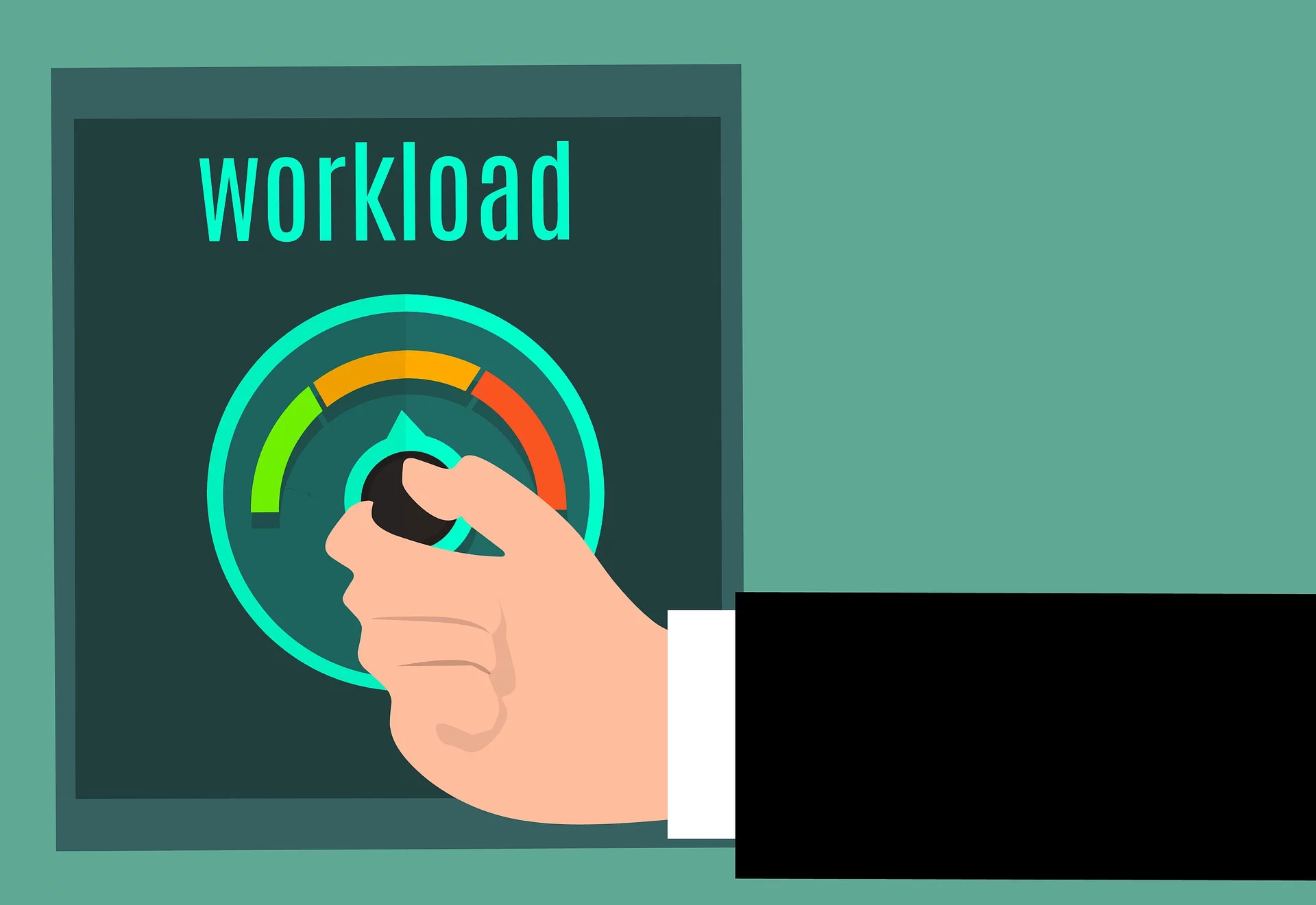In this Article:
Try Kanbanchi now
Start your free trial

Today’s business world makes demands on all working men. Competition in the workplace makes employees double efforts to get a promotion. Teams take excessive and often undefined working hours to meet deadlines and stakeholders expectations. Workload management is definitely something that teams should care about.
The COVID-19 pandemic lockdown has made the situation even worse. Working from home has become a new norm. Unfortunately, the line between working and rest hours frequently blurs. As a result, it feels like you are working non-stop.
Probably, it is fine if overload happens from time to time. It won’t take much time to recover and get back to a normal routine. However, if a workflow is constantly an overwhelming process it may lead to dismal consequences.
Successful workload management is a process of effective distribution of tasks. Basically, for individual workers, it should start from a realistic assessment of their capabilities. Working as a freelancer or being a part of a team, a person should evaluate if they can handle their tasks.
Let’s talk about teamwork. Of course, it is important to understand that the workload among team members won’t be equal. Firstly, the level of workload depends on the employee’s role. Secondly, team member’s experience plays a major role. Certainly, a competent team leader understands that fair workload management doesn’t even mean workload management.
“Burnout” is a term that has been on everyone’s lips lately. Even though the term was coined in the 1970s, it is still incredibly important today. Some people don’t want to take this emotional state seriously believing that it is not as dangerous as people tend to describe it. Well, that’s the wrong attitude.
A stressful lifestyle and unbalanced routine may lead to reduced performance, physical symptoms (e.g. back pain, gastrointestinal problems), exhaustion, depression and even suicidal thoughts. Take the case of Japan, a country where the term “karoshi” (overwork death) has appeared. Even though Japanese workers may take 20 days of annual leave, most of them never do. They name different reasons for that behaviour. Luckily, the government is taking steps to change the situation, although it is a challenging task to change the work habits of the whole nation.
Along with the negative impact on an individual’s physical and mental health, incorrect workload management can influence business negatively. Chronic overload causes a snowball effect that will be difficult to manage. Additionally, according to a recent study, a balanced team workload leads to increased satisfaction level among employees.
When team members have a correct perception of the volume of work they need to do, team productivity increases.

Sole workers should definitely proceed from personal capabilities evaluation. While team leaders face a more difficult challenge. Here are the points to keep in mind for successful team workload management.
Start with this simple step. List all the projects and tasks your team is working on. Then review this list and compare the efforts needed to accomplish with the bandwidth of the team. Apparently, you will find out that the whole volume of work can’t be done at once. That’s why it is important to set the sequence of tasks implementation.
Make sure to assign tasks with the highest priority at first. Usually, these tasks require special attention even if they actually don’t require much effort. Mark tasks with priority indicators – from low to critical – to let your team know what they should invest their efforts in.
What’s important, realistic estimates and deadlines. Monitor estimates vs actual time spent ratio. Observing task start and due dates on a timeline helps to avoid overlaps and limit the work in progress. Thus the workload of a specific team member will be more balanced.
Complicated tasks can ruin the whole workflow. Getting stuck on them might lead to that very snowball effect. Sometimes taking smaller steps really leads to the goal faster. So make sure to break down projects or high volume tasks.
Check if the tasks are assigned to the appropriate people. Make sure if the scope of work is distributed fairly. Ask team members whether each of them can handle it. Keeping the working environment friendly is essential. Therefore a member who needs the workload to be enlightened won’t face the question “how to tell the boss you have too much work?”.
Of course, the personal workload may be tracked with the help of really simple tools. For instance, Google Calendar. But again team workload needs a more powerful tool to be tracked. Kanbanchi is an excellent example. It has a team workload monitoring tool where each collaborator is shown in a separate list. The sum of estimates is displayed for each user. Along with this tool, Kanbanchi includes such simple yet important features for workload management as priority indicators, checklists with the ability to set the weight to items, subcards and user roles. Team leaders may rely on the Gantt chart which shows tasks in a timeline.
Attempts to manage workload effectively may seem challenging. But choosing the right software you will provide yourself and your team with helpful and enduring tools.
In this Article:
Start using Kanbanchi now
Start your free trial